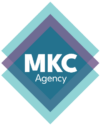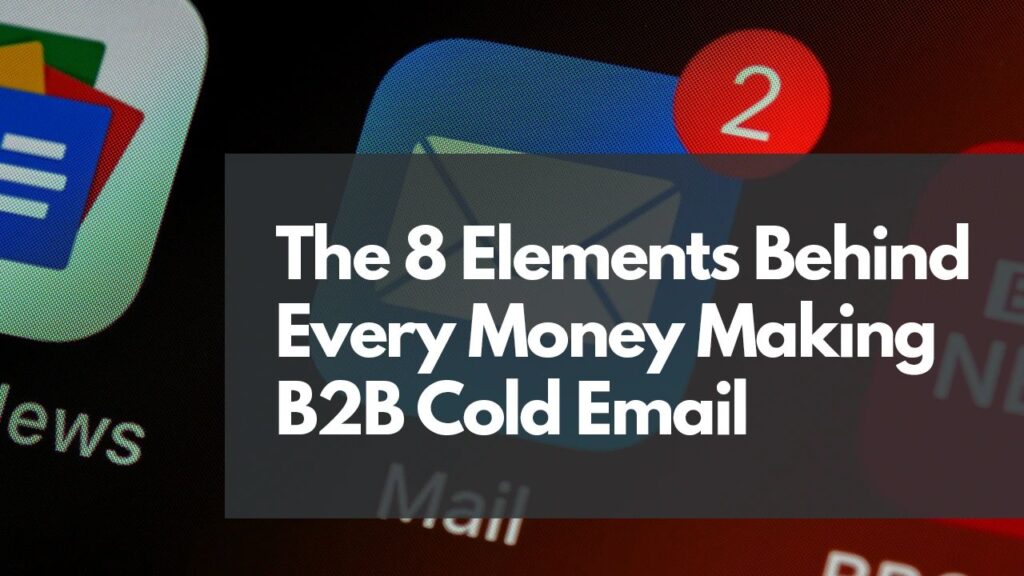There is a reason bllind dates are not for the faint of heart. Trying to impress a stranger enough that they want to call you back is not an easy task. In the business arena, cold-calling is often synonymous with super-confident salespeople trying hard to get strangers not to hang upon them. So how is cold email any different?
Cold email is the selling technique of sending a sales pitch to a prospective client without prior contact or relationship. Essentially, you send an email to reach out to the prospect, establishing a rapport in the message. Then you prompt the recipient to chat with a salesperson over the phone or video chat to sell your product or service.
While not always easy, cold email marketing in the right hands can be a profitable, scalable sales funnel that can feed into your existing B2B sales process. It’s often underutilized because the process and necessary information to get it up and running can seem overwhelming. Never fear, here are some best practices for sending B2B cold emails to make your endeavour a success and make perfect strangers want to pick up the phone and give you a chance.
The 8 Elements Behind Money Making B2B Cold Email:
1. Write catchy subject lines
Fun, attention-grabbing subject lines are a keystone component of effective cold emails.
If you can’t get a prospective client’s attention from the get-go, your engagement chances plummet to zero.
But how do you create clickable subject lines that do not look “spammy”? That, my friend, is a tricky thing to accomplish.
Two simple steps for creating the ideal subject line are:
- Use short subject lines.
The target subject line has 60 characters or less. Short subject lines get opened more and hold a bit of mystery–just what you need to get someone’s attention. “Got milk?” is more clickable than revealing all the info with, “Do you have milk in your fridge, or would you be interested in having some?”. Also, shorter lines prevent your subject line from trimming on mobile devices, which is never a good look.
- Tickle interest and engage curiosity
Kyle Racki received the best cold email he’d ever seen–and it was all thanks to the quirky subject line. The email subject line “Magic Goggles” is fun and snappy; it is way more engaging than “An unprecedented way to understand the customer experience,” amiright?
2. Keep it short with a maximum of 100 words
According to a recent study of 40 million emails conducted by Boomerang, cold emails between 50 and 100 words get higher reply rates.
The key is to keep it short. You catch more bees with honey…and you catch more leads with brevity.
Keep it short, sweet, and to the point. Potential leads are busy bees, and their inboxes are overflowing with pitches and offers. Using fewer words and getting to the topic will increase your chances of getting their attention.
3. Personalize and favor an ABM approach
Whatever you do, don’t start your email with “Dear customer.” You might as well start with “To whom it may concern.”
This way of addressing a potential customer screams “lame message ahead” when they open the email.
It is better to avoid such generic terms and boring sales messages. Instead of showing your lead some personality, it hit them with a corporate tone that is far from interesting.
Always find the prospect’s first name and use it. Whatever personal information you know about your lead, use it to make your email attractive (like the lead’s recent activity or interests).
You can also find a blog comment, a LinkedIn post, or even a hobby of theirs and add it to your email. You can take personalization further with account-based marketing (ABM), delivering a higher ROI than other marketing activities. The advantage to ABM is it enhances the idea of personalization and applies it to your overall sales strategy.
4. Keep paragraphs and sentences short
Most people typically scan content while reading, concentrating only on the relevant and valuable information. They rarely take the time to read a complete sentence, let alone entire paragraphs of information.
To make cold emails easier to scan and digest, use 2-3 sentence paragraphs with brief, simple sentences.
Also, keep your follow-up emails simple, easy-to-read, and fun.
5. Have a simple, single CTA
There is such a thing as too much of a good thing. Having multiple Calls-to-action (CTA)s makes it hard for a lead to make a choice.
Excessive links and attachments could flag your email as spam, and too many choices means taking any action becomes more challenging for the recipient. Funnel your message down to one single specific point, and guide your lead to one solitary call to action.
6. Use GIFs and emojis to engage emotionally
As the Joker is fond of saying, “Why so serious”? Leads want to buy from someone they like, and they will like you better if you’re fun.
B2B is often considered a serious “straight-faced” industry, so you gain a lot from using fun and humor to be friendly and make authentic connections.
Instantly improve the personality and warmth conveyed in your emails by using images, gifs, or emojis.
7. Internalize follow-up
Repeat after me: follow-up, follow-up, follow-up! Did you know that 80% of sales will require an average of 5 follow-ups? And yet, after just one attempt, 44% of salespeople fail to follow up. Hard to believe, but true.
Prospects are busy people, they may not find the time to reply quickly, and even if they have the best intentions, they may forget to follow up later. However, as a business, following up is key for a successful B2B cold email campaign.
8. Please, proofread your cold email
Typos in an email are like smiling at your blind date with lipstick all over your teeth. Just…no. Check the basics to get them right. Always fact-check the name, job title, and company of your lead. For the love of grammar, avoid basic errors like spelling mistakes or incorrect information about the lead (like enthusiastically greeting your date as “Hi Melanie!” when her name is, in fact, Melissa).
Cold emails are a powerful marketing tool when done right. Don’t miss out on this opportunity to reach new leads!
Do you need help getting your marketing campaign off the ground, or are you not sure how to make your digital marketing strategies better? Megan Killion Consulting is a team of dedicated, experienced professionals who are equipped to meet your specific targets and get you the leads you want. Give us a shout, and we can start working together to meet your unique business needs.

